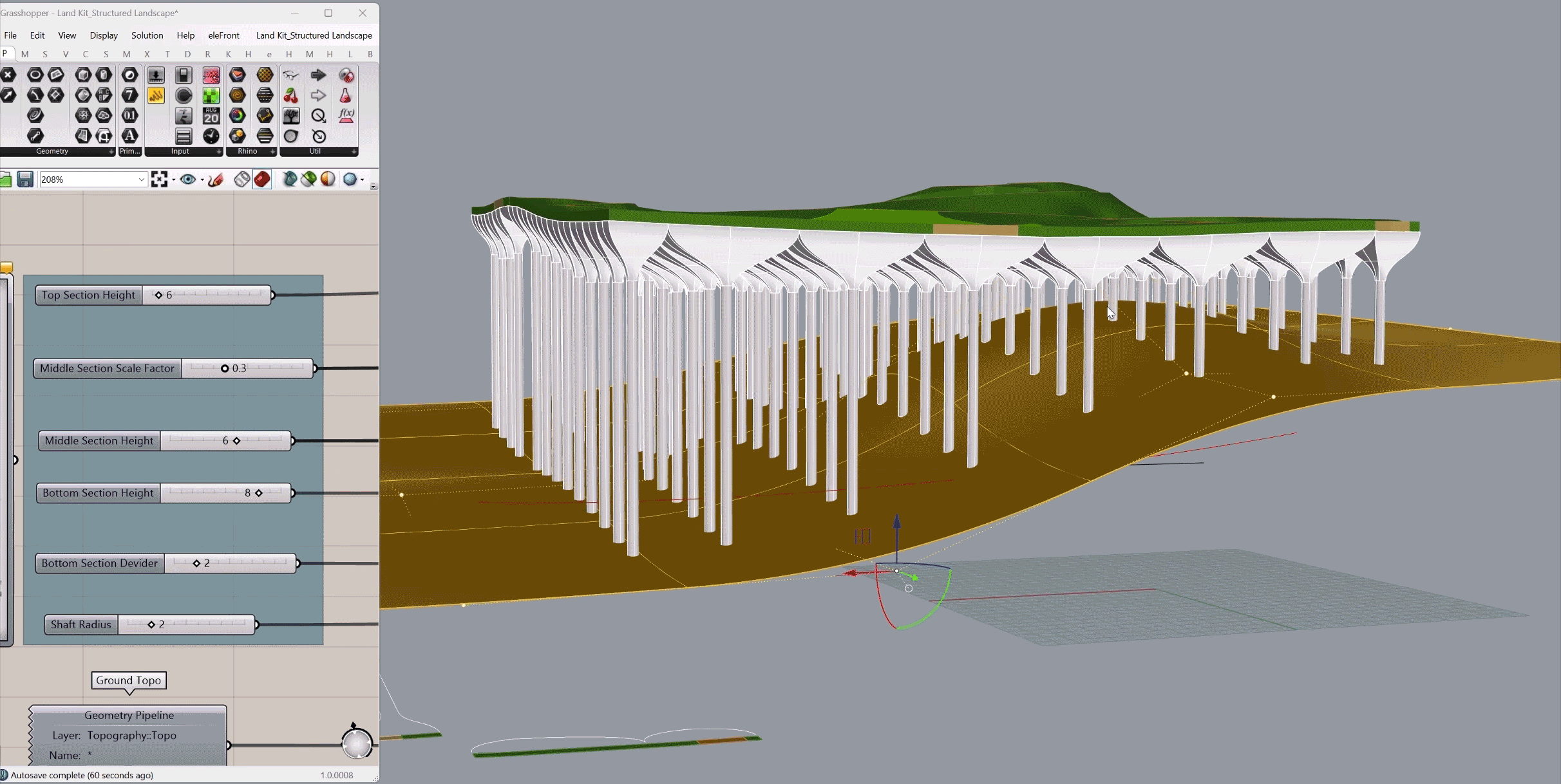Working toward Fluid Designs: The Future Role of Digital Twin Models in Landscape Architecture
A Fluid Workflow Using Land Kit.
The inevitable moment an architect mentions "Oh, there’s just a tiny tweak to the building footprint." (Tiny? HA!) And suddenly your perfectly calibrated planting design needs a massive overhaul, and that comfortable deadline morphs into an all-nighter for you and your team. We've ALL been there. But what if—and stay with me here—these inevitable surprises became part of your process allowing for real time adaptation to your design? Enter the digital twin: your project’s virtual 3D alter ego that has the potential to become the industry's worst-kept secret.
What is a Digital Twin?
A digital twin is a virtual model that mirrors a real-world project in great detail. It combines comprehensive data like topographical information, environmental conditions, and operational data into an interactive platform. Unlike static CAD models, a digital twin evolves with the project, staying perfectly synced and continuously responsive. This offers several key advantages:
Continuous Optimization: The digital twin provides real-time feedback and scenario testing, allowing designers continuously optimize the project design, operations, and maintenance.
Predictive Maintenance: By analyzing sensor data from the physical asset, the digital twin can make site predictions that enable proactive maintenance and validate program elements of a design.
Improved Decision-Making: The wealth of data and insights provided by the digital twin empowers stakeholders to make more informed decisions throughout the project lifecycle.
Little Island’s Twin
This fluid model adapts based on rules you set.
Parametric Design is a Bridge to Digital Twins in Landscape Architecture
The time to embrace digital twins in landscape architecture is approaching fast. At LANDAU Design+Technology, we're making sure you are not just keeping up with the future; you are designing it. With the tools that we are building we are slowly bridging the gap between the digital twin model and computational design models with software like Land Kit. Our process is straightforward and gets us closer to a functional digital twin:
Gather Your Site Data Collect all the essential site information – think of it as your project's digital DNA.
Build Your Computational Model Using Rhino and Land Kit, you can create a model that's more responsive than a traditional CAD drawing.
Iterate Instantly Make changes faster than your client can change their mind. Your digital model can be fluid and update with a shift of a slider:
Test multiple design scenarios
Visualize impacts from hydrology, cut/fill, carbon, and sun exposure
Optimize different aspects of performance from plant biodiversity to your design’s carbon footprint
Why Your Next Project will need the Fluidity that comes with Parametric Modeling
Picture this: Your client asks, "How will this space look in fall?" or "What happens during a 100-year storm?" Instead of breaking into a cold sweat, you allow us to build your digital twin and show them how the site conditions change. No more awkward "let me get back to you on that" moments. Here's what makes digital twins the Swiss Army knife of landscape architecture:
1. Better Visualization and Simulation
Show clients exactly what they're getting (no more "I thought it would be bigger" conversations)
Test designs in every season without waiting for actual seasons to pass
Simulate solar conditions and hydrologic patterns
2. Improved Collaboration Across Teams
Keep everyone on the same page (even that engineer who never checks their email)
Spot conflicts before they become fires
Share updates fast
3. Faster, More Efficient Workflows
Automate repetitive tasks (because life's too short for manually drawing contours)
Respond to changes in minutes
Spend more time designing, less time troubleshooting
True Digital Twins are the Future, But Parametric Modeling is Your Tool for Sustainability Today
In an era where "sustainability" is more than just a buzzword on your project proposal, fully functional digital twins will be the ace in the hole for landscape architects. But the future of digital twins is still on the horizon. In the meantime, parametric modeling offers a critical stepping stone, providing many of the same capabilities to boost sustainability efforts today.
Parametric modeling allows for greater fluidity and responsiveness in the design process. By building models with underlying parameters and relationships, landscape architects can rapidly test and optimize designs against various environmental conditions and performance criteria. This supports enhanced climate resilience, biodiversity, and ecological integrity - critical factors for sustainable landscape design.
Climate Resilience
Want to know how your design handles a heatwave or manages a 100-year flood? Your fluid, responsive parametric models can simulate how designs handle heatwaves, flooding, and other climate impacts, allowing for optimization of climate resilience strategies. This instills confidence in the long-term performance of your work.
Biodiversity and Ecology
Parametric models enable testing of plant combinations and performance. Designers can ensure selected native species will thrive, supporting increased biodiversity and ecological resilience. The parametric approach allows rules-based refinement that approximates natural systems.
While digital twins represent the future of landscape architecture, parametric modeling bridges the gap, offering designers a more responsive, data-driven way to plan for sustainability today. It's a critical stepping stone on the path to a truly resilient, ecologically-empowered future for the industry. When the full power of digital twins arrives, parametric modeling users will already have the tools and workflows in place to maximize their impact.
Prompts as parameters - changing plant palettes on the fly by Chris Landau
Lets Move Towards the Future.
Incorporate parametric modeling into your design process to build more fluid, adaptive, and sustainable landscapes. Because in the world of landscape architecture, the only thing better than a great design is a great design that adapts, evolves, and grows with your project.




